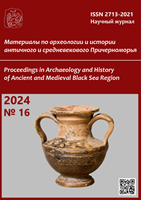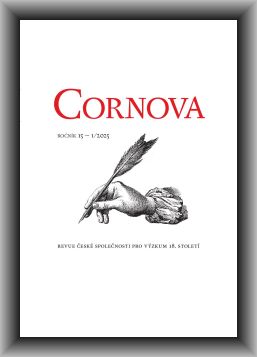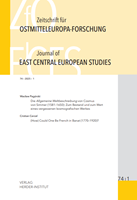Author(s): Marinel Pădure / Language(s): Romanian
Issue: 40/2025
Church architecture from the 8th century represents an essential chapter in universal history and culture. It marks a period of transition and synthesis between the cultural influences of late antiquity and the early Middle Ages, reflecting the social, political and religious changes of the era. The architectural styles developed during this period, such as the Christian basilica or the first forms of Byzantine architecture, offer a profound perspective on how faith and culture shaped sacred space.The preservation of these buildings and their specific elements is of particular importance for future generations. They are not only monuments of faith, but also valuable historical testimonies, which provide information about the construction techniques, the materials used, as well as the symbolism and aesthetics of the era. By protecting and conserving them, the continuity of a living link with the past is ensured, allowing a better understanding of the cultural and spiritual identity of humanity.This paper aims to analyze the characteristics of ecclesiastical architecture of the 8th century, its importance for the global cultural heritage and the need to protect these masterpieces for the future.In the 8th century, the region of Wallachia, which is today part of Romania, was in a period of cultural and historical transition. The influences of ecclesiastical architecture of this period are difficult to identify precisely due to the lack of direct sources and well-preserved ruins. However, some general features can be highlighted, taking into account the historical and cultural context. In the 8th century, the influence of the Byzantine Empire was predominant in the south of the Danube, and elements of Byzantine architecture began to penetrate the Wallachia area. Building materials included stone and brick, and churches built during this period (or immediately after) reflected the use of simple forms, with a cruciform plan and domes. Local traditions and syncretism include the church architecture of Wallachia during this period, which reflected a mixture of Byzantine influences and local traditions.Din cauza invaziilor și migrațiilor repetate, multe structuri religioase din această perioadă nu s-au păstrat. Totuși, cercetările arheologice din România au scos la lumină urme ale unor așezări și sanctuare creștine timpurii.Church architecture is one of the most impressive artistic and cultural expressions of humanity, having a profound meaning throughout history and maintaining its relevance to this day. It reflects not only the religious beliefs of the communities, but also the artistic, technological and social development of the eras in which it was created. Cultural and tourist heritage: Many churches are included in the UNESCO heritage (for example, the Monasteries of Bukovina or the Notre-Dame Cathedral in Paris), attracting millions of visitors annually. Continuing the tradition: Currently, church architecture combines tradition with innovation, preserving the symbolic essence while adopting modern techniques. Sources of inspiration: Churches continue to inspire artists, architects and designers with their beauty and complexity. Spaces of contemplation: They remain places of prayer, meditation and spiritual refuge for people around the world. Church architecture is more than an artistic expression; It is a living testament to the faith, culture and identity of the communities that created it. From early basilicas to modern cathedrals, these sacred edifices continue to inspire respect and admiration, connecting the past with the present and spirituality with art.
More...





![[Pseudo?]Demetrian thoughts on the Homeric phonetic idiom](/api/image/getissuecoverimage?id=picture_2025_88015.jpg)